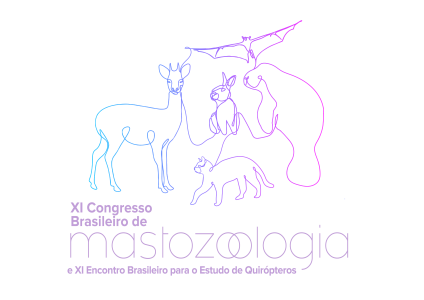Dados do Trabalho
Título:
LARGE AND MEDIUM-SIZED LAND MAMMALS FROM THE MARAJO ARCHIPELAGO, PARA, BRAZIL: REVIEW AND COMMENTS ON CONSERVATION
Resumo:
The first inventories on Amazonian islands date back to the early 20th century. Yet, previous studies involving the Marajó Archipelago were restricted to a certain island and specific habitats, showing the need for a broader checklist. Herein we present a most recent complete checklist of large and medium-sized land mammals of the Marajó Archipelago, including the four main islands: Caviana, Gurupá, Marajó, and Mexiana. We also highlighted the temporal range of the collected specimens and comments on the conservation status of all species. To gather the maximum available information, we comprise data from specimens in scientific collections, direct and indirect records, and non-capture methodologies, cross-checked with previously published literature. We listed a total of 46 species of 20 families and nine orders, recorded on the island from 1879 to 2017, in 67 different localities. Primates was the most recorded order and Carnivora was the most speciose. Alouatta discolor (Spix, 1823) and Bradypus tridactylus Linnaeus, 1758 were considered new records. Marajó Island had a higher number of collected vouchers and species richness. Each island presented a distinct species composition, with taxa endemic to the Belém, Guyana, and Xingu Amazonian interfluves probably. Most of the collection points in the Archipelago are concentrated in the eastern Marajó Island, with the western region and also the other smaller islands still poorly sampled. This might be a reflection of a sampling deficit. Some species were removed from the list due to uncertainty and unresolved conflicts regarding the geographic distribution of the vouchers assessed. Our results also reinforce the importance of scientific collections to the development of investigation on fauna composition since it holds most of the data obtained (84,9%). We suggest that additional field efforts will include new records for the archipelago, extending the checklist, and confirming unresolved occurrences. Species classified globally in some threatened categories represent 30% of the diversity, although the archipelago is inserted in a conservation unit (APA Marajó), the observed anthropic pressure (mostly cattle ranch) reflects on its fauna and reinforces the need for conservation actions.
Financiamento:
CNPq
Área
Inventário de espécies
Autores
Manuela Vieira dos Santos, Marcelo José Sturaro, Raissa Tancredi Cerveira, Caio Cunha Ferreira, José de Souza Silva Júnior
